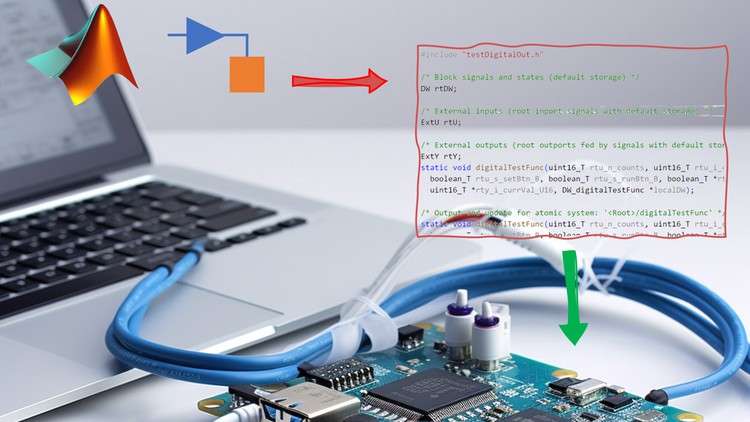
Model Based Design: From Requirements to Testing on Hardware
What you will learn
Understand the concept of Model Based Design
Navigate the Simulink Environment
Configure Simulink Model for Code Generation
Integrate Hand-Written Code with Generated Code from Simulink
Deploy Code on Microcontroller
Test Code on Real Hardware
Requirements Analysis
Interface Sensors and Actuators with Microcontroller
Develop Algorithms for Different Sensors Using Simulink
How to Read and Write Digital Signals
Read Analog Signals
Measure Distance Using Ultrasonic Sensor
Use LDR (Photoresistor)
Develop Algorithm for Rotary Encoder
Algorithm for Infrared Sensor
DC Motor Control using Digital and Analog Signals
Description
Model Based Design: to be MBD Engineer
We will dive into the world of Model Based Design and Embedded Systems, explore the entire software development life cycle.
Initiate the process by comprehending the requirements, transforming them into models, generate code from models, integrate codes and deploy on hardware.
Throughout this course, we will guide you systematically in the creation of embedded systems projects and leveraging the power of the model based approach with Simulink.
You’ll gain expertise in constructing models tailored for code generation, deploying this code seamlessly onto microcontrollers, and conducting real-world hardware testing.
Furthermore, we will provide you with a comprehensive introduction to the essential Simulink blocks that are frequently utilized in embedded software projects within industries such as automotive.
In addition, will learn the common design concepts in industry such as implementation of counters, debouncing algorithm and other topics.
Learn how to interface different sensors, design models to use data from them and to control different actuators.
This course will build your knowledge step by step and prepare you to start your journey as model based design engineer in industries such automotive, aerospace and robotics by building real embedded systems projects starting from basic examples to more complex designs.
This course will teach you how to handle the following sensors and actuators using model based design techniques:
- Model, Generate C/C++ Code and Deploy on MC Target
- Digital inputs and outputs (Buttons and LEDs)
- Analog signals (Potentiometer)
- Combine digital and analog signals in a control algorithm to control motor speed
- LDR
- Ultrasonic Sensor
- Infrared Obstacle Avoidance Sensor
- Rotary Encoder
- Simulink Support Package for Arduino
In each lesson we will learn a new design technique and introduce you to multiple ways of building the same functionality to enhance your modeling skills and deploying .
Content